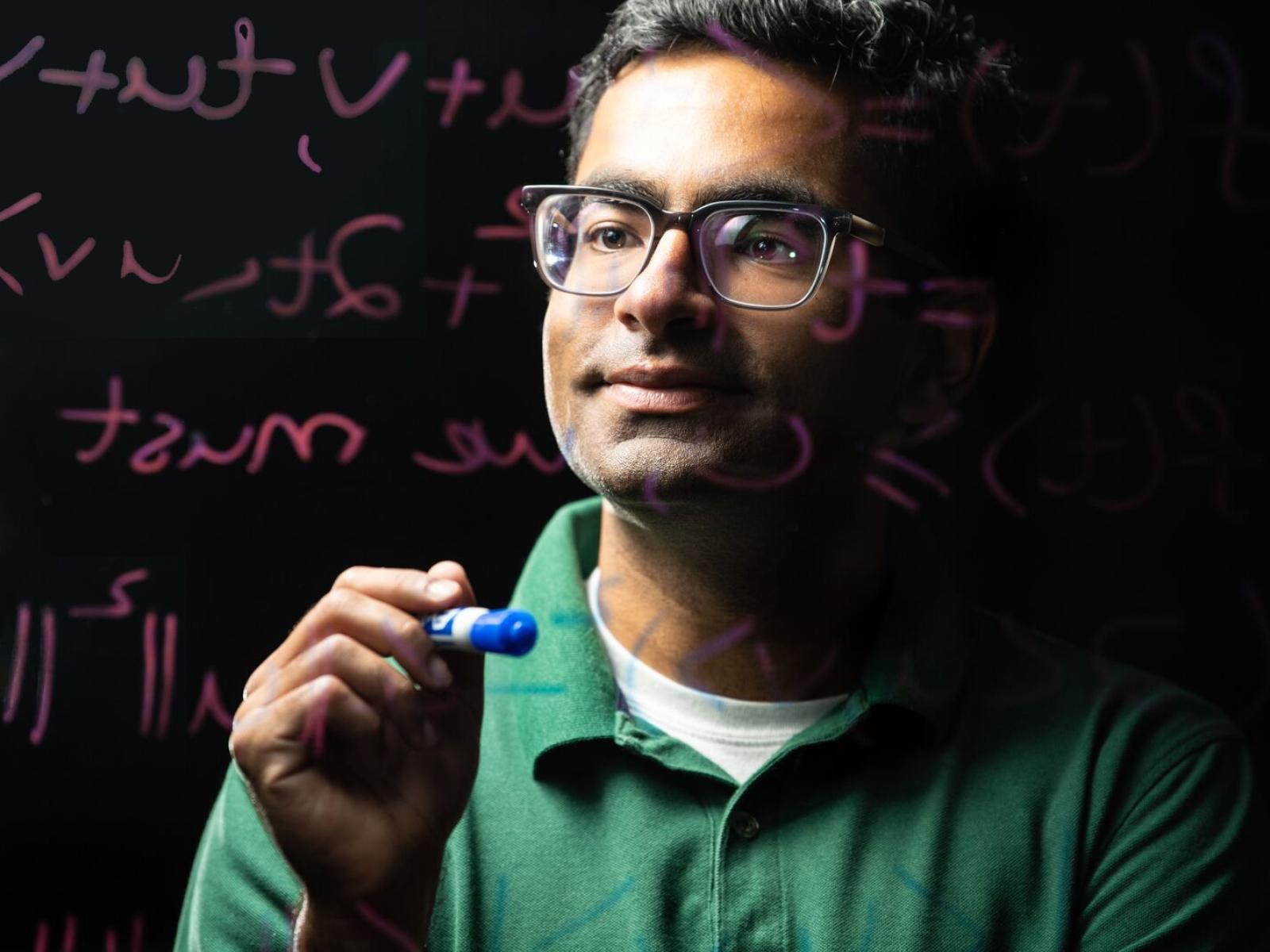Tackling Hard Governing Equations with Machine Learning
PNNL researchers solve complex equations with the help of deep operator networks

PNNL researcher Saad Qadeer works on developing highly accurate numerical methods for solving physical problems in complex geometries.
(Photo by Andrea Starr | Pacific Northwest National Laboratory)
Mathematically describing the natural world is an incredibly complex job. Special equations called partial differential equations, or PDEs, are particularly adept at this. They can be used to model everything from fluid flows to electrodynamics to sound propagation. However, solving these equations on complicated domains poses an incredibly difficult challenge. Building on a machine-learning-based technique, researchers from Pacific Northwest National Laboratory (PNNL) and the University of Washington (UW) developed an approach to make these solutions easier to obtain. Their research was published in Scientific Reports.
“Solving a PDE basically means adding up all the small, infinitesimal changes in a system,” said Saad Qadeer, corresponding author of the paper. “If lots of those tiny contributions are off by a little bit, those errors get amplified.”
Spectral methods can be used to solve PDEs accurately and efficiently, but their applicability depends on the basis functions that are chosen.
“Coming up with basis functions on weird domains from scratch doesn’t work—people have been trying for ages,” said Qadeer. “We wanted to see if machine learning could help us choose them instead.”
Qadeer worked with Panos Stinis, leader of the Computational Mathematics group and co-director of the Collaboratory on Mathematics and Physics-Informed Learning Machines (PhILMs) at PNNL, and UW student Brek Meuris to test out that idea. The team turned to DeepONet—a deep learning operator network developed by PNNL joint appointee and PhILMs director George Karniadakis from Brown University—for help.
“DeepONets are very good at yielding functions,” said Qadeer. “We found that we could get very good basis functions from DeepONet to feed into our spectral methods to solve PDEs with very little error.”
While the researchers only tested this method on a single dimension, this proof-of-concept study indicates that their method could be expanded to higher dimensions and more complex domains.
“Our preliminary results are very encouraging,” said Qadeer. “We are excited to see how our method performs in other situations.”
This work was supported by the Department of Energy, Advanced Scientific Computing Research program.
Published: March 2, 2023